Free US Shipping On Orders Over $49
Easy 30-Day Returns
Financing Available Through ![]()
Free US Shipping On Orders Over $49
Easy 30-Day Returns
Financing Available Through ![]()

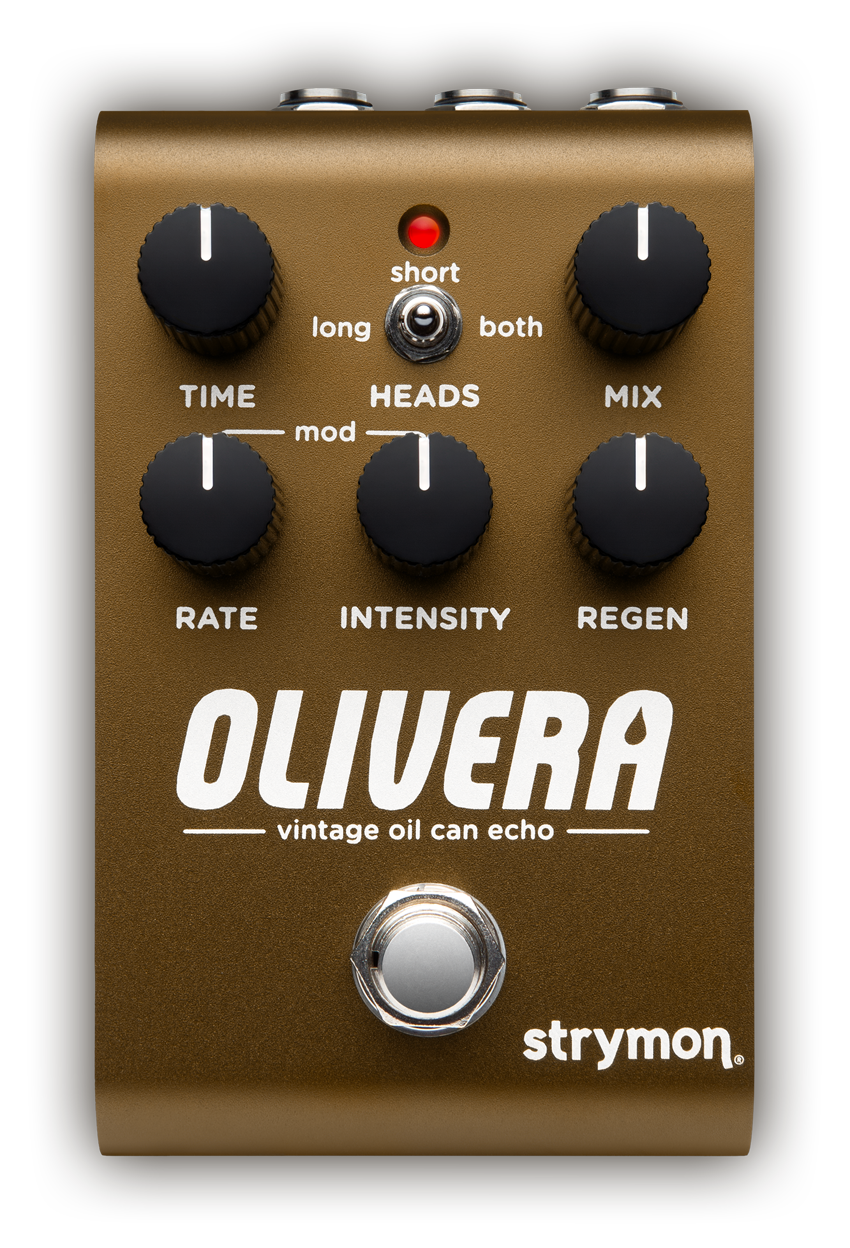
$259.00
Available for Pre-Order
-
Turn the clock back to a time when audio effects were still uncharted territory, and experience the vintage syrupy warble of a true oil can echo.
From dark and modulated repeats to sustaining textures that approach the sound of classic spring reverb tanks, Olivera is the first pedal emulation that truly captures the mechanical yet wildly organic nature of these oddball machines, bringing funky inspiration to anything you run through it.
The first oil can echoes were made by the Tel-Rey company in 1959, achieving the repeats by writing a static charge to a small rotating disk inside a can, using oil as a lubricating dielectric. This novel approach yields very different sounds than what you would hear from a tape machine, and the results instantly transport the listener to a darker and murkier place that positively oozes vibe.
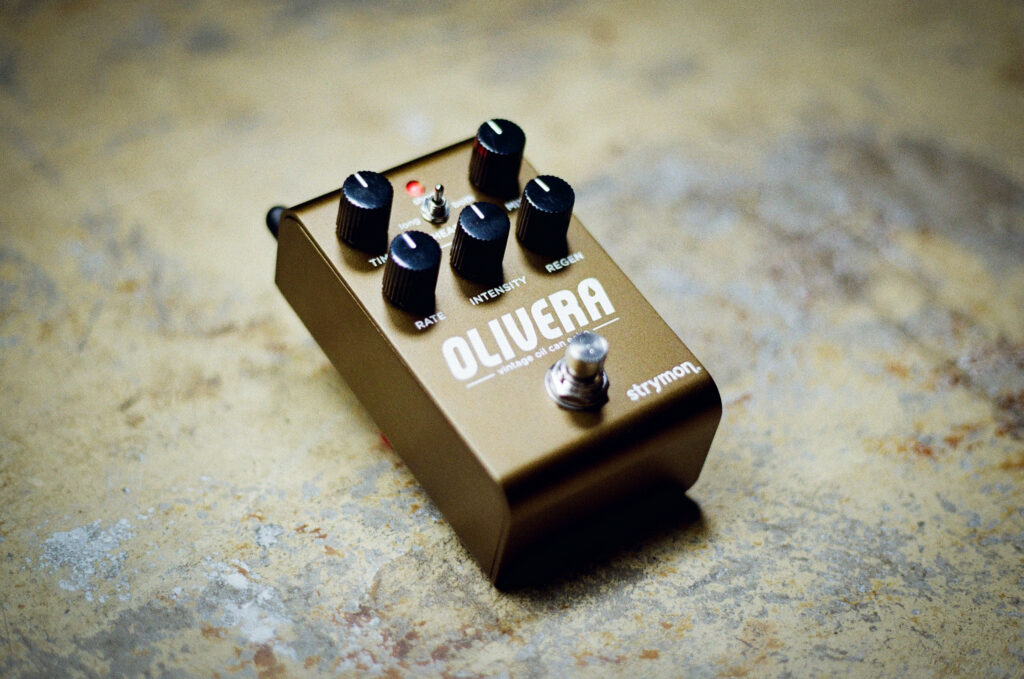
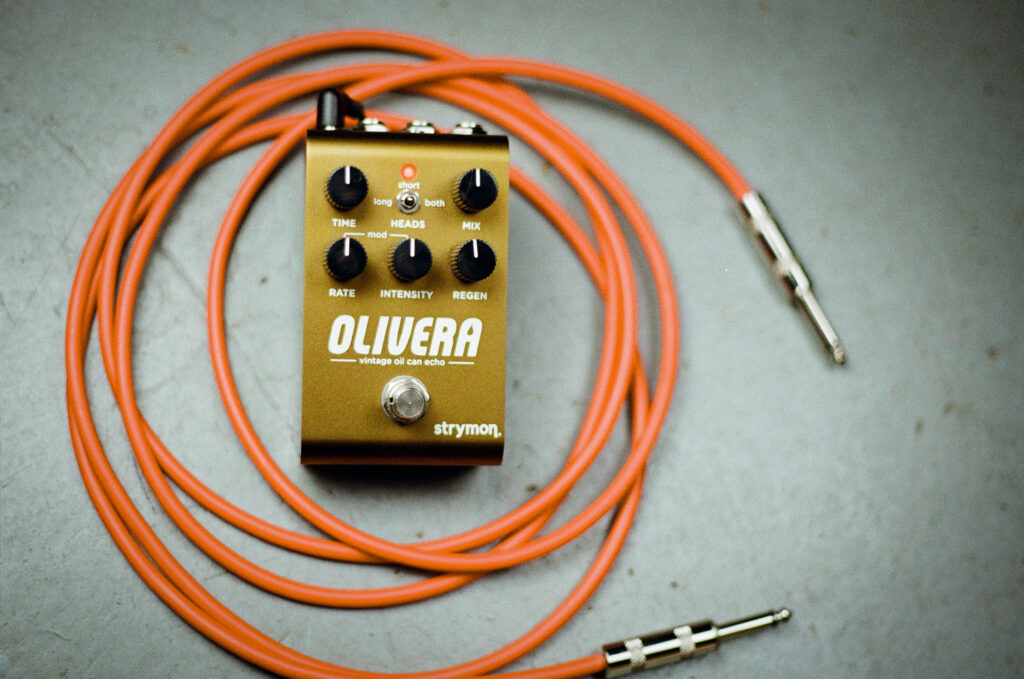
The sheer number of variables in the design made authentic emulation challenging, requiring a ton of research and a brand new algorithm to get to the realism that we set out to achieve. We feel confident that Olivera captures the true soul of the original units, from the dark repeats with unique rhythmic and decay characteristics to the unreal thick modulation that changes and morphs as the audio does. No other type of delay can do what an oil can does, and no other pedal emulation comes close to Olivera.
Olivera has a host of powerful features that make it easy to integrate these nostalgic sounds into your modern rig: Discrete stereo operation for independent processing of the left and right stereo inputs. A simplified control set and expression pedal and Multiswitch capability. Delay spillover for preserving repeats when the pedal is switched off. Discrete Class A JFET stereo input preamp for exceptional touch sensitivity and ideal frequency response. MIDI control of patch recall and continuous controller data. Premium components, rugged construction that can take a beating and a USB jack for performing firmware updates or controlling the pedal from your computer.
Olivera makes it easy.
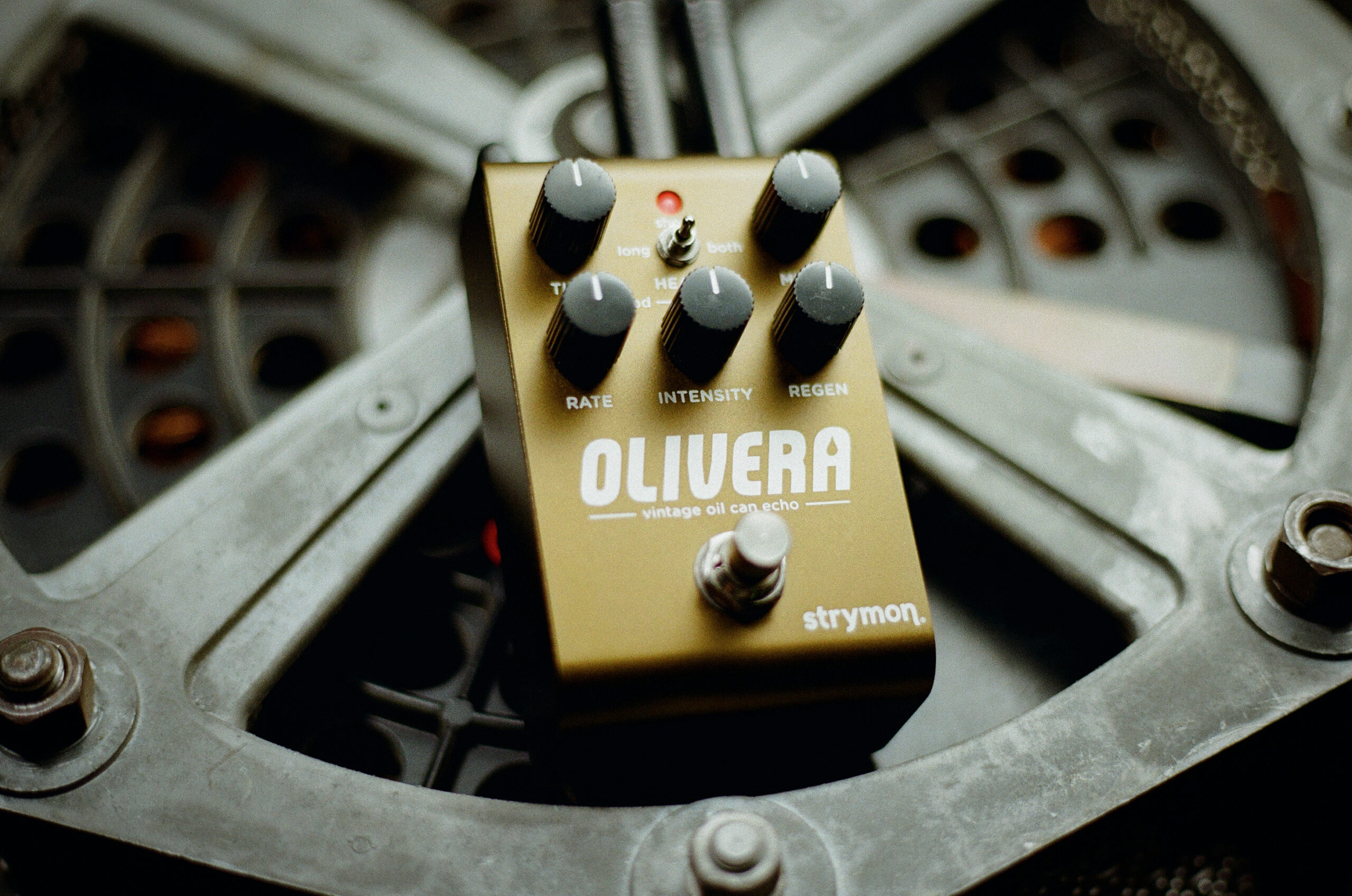
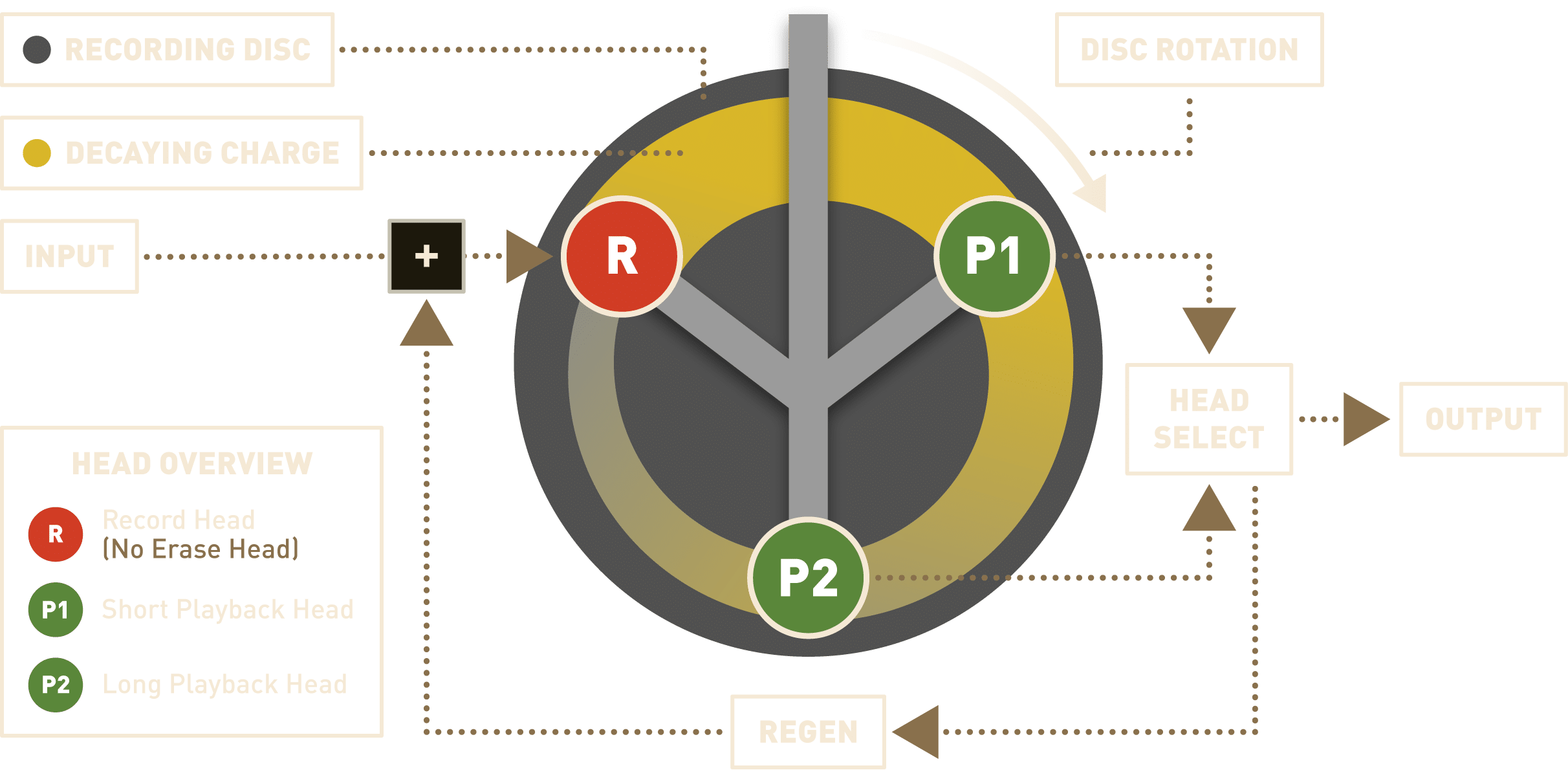
Vintage oil can echo devices are electromechanical units that write a static charge onto a rotating disk housed in a can partially filled with oil. The oil serves as a lubricant that helps retain the charge on the disk. The resultant delay signal is very band limited, creating a murky sounding echo. But that’s not the only quality that gives the oil can echo its atmospheric magic.
The units have a record head and typically two playback heads, but generally no erase head, allowing some dissipating charge to remain as the can rotates. This contributes to two unique characteristics of these systems.
First, it creates a regenerating repeat even when no feedback (REGEN) is applied from the playback heads. The static charge has its own decay time constant, so there are always “repeats” from the echo at all settings.
Second, it creates an uneven cadence to the echoes, where the first echo occurs based on the distance from the record head to the playback head. But subsequent echoes occur at the rotational speed of the system as the dissipating signal comes back around on the disk. The resultant off-kilter delay cadence is largely responsible for creating the sense of atmosphere without a strong “rhythmic” element.
By adding feedback (REGEN) from the playback heads, and/or combining the output of the two heads, the atmospheric nature of the echoes increases.



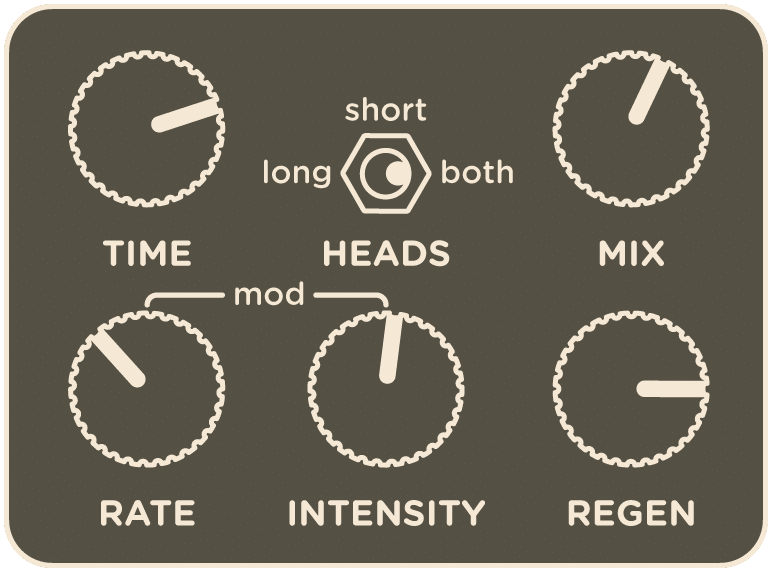
Both playback heads are engaged with a high degree of regeneration and a bit of modulation to produce a moody atmosphere.
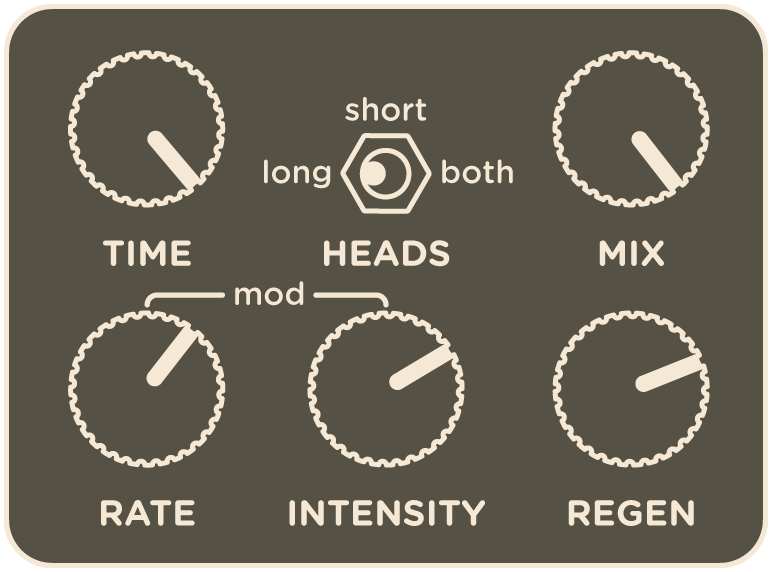
High Time and Regeneration values create a wash that almost feels looped. Dry and Wet mixed in Pro Tools.
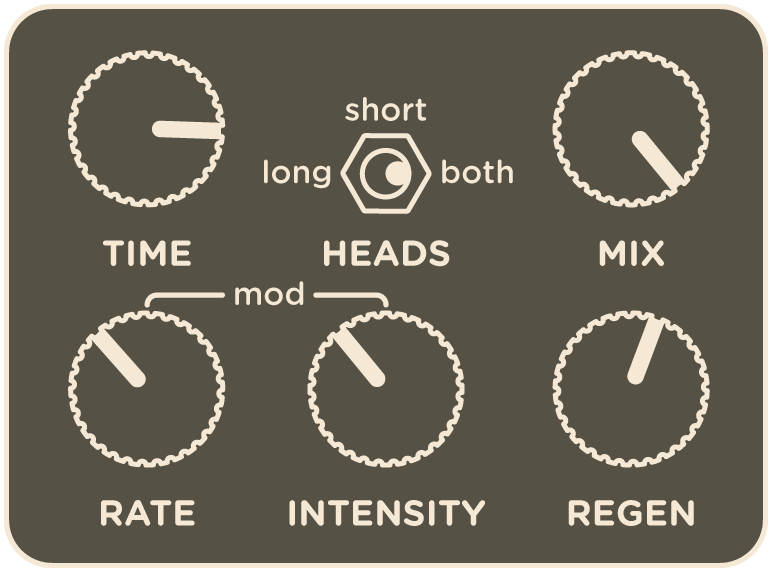
The cascading feeling here comes from a longer Time value with Both heads selected. Dry and Wet mixed in Pro Tools.
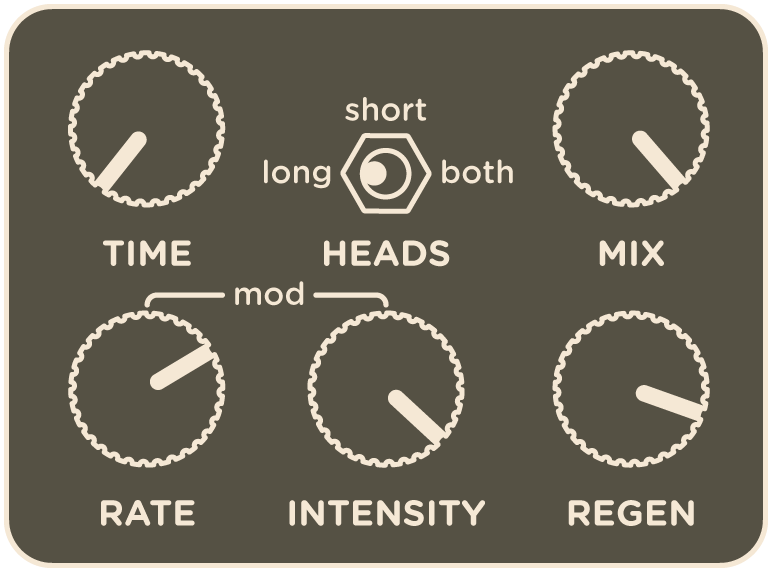
Here, Olivera is used as a vintage modulation machine, with minimum echo values. Dry and Wet mixed in Pro Tools.
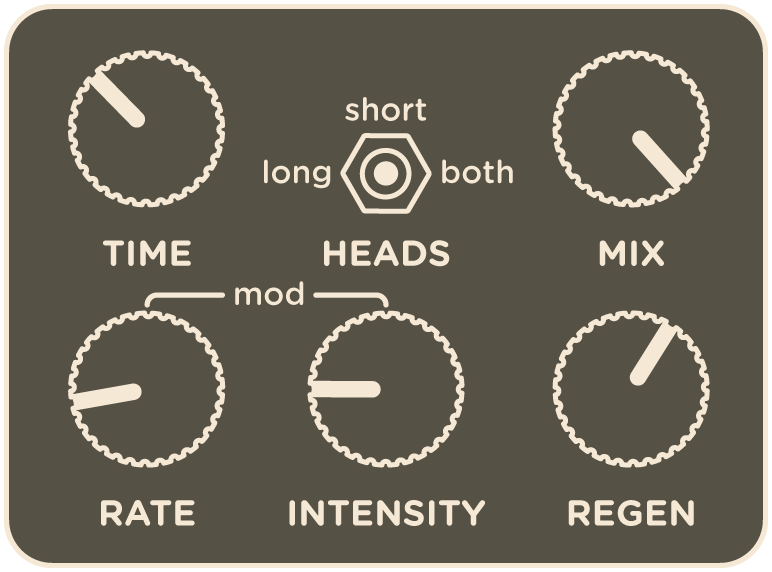
Olivera works with gain as well, here with little modulation and a Short head setting. Dry and Wet mixed in Pro Tools.
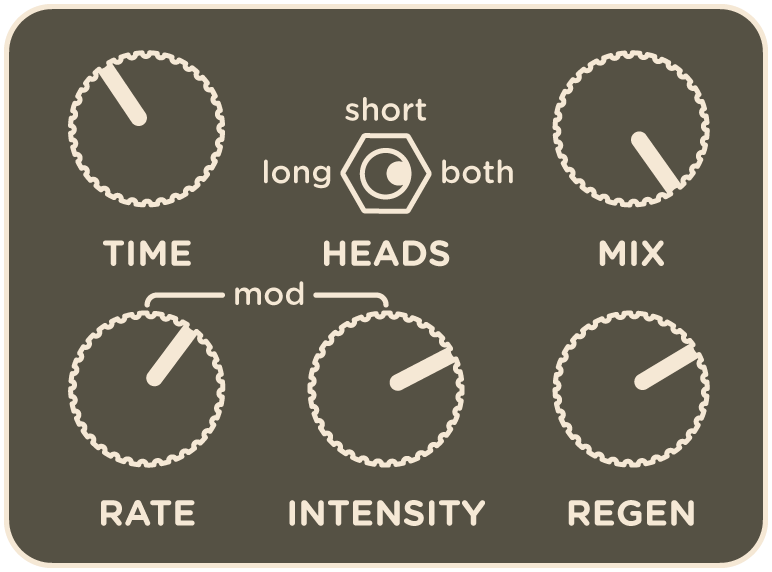
Medium values across the board and Both heads create a wide swimming ambience. Dry and Wet mixed in Pro Tools.
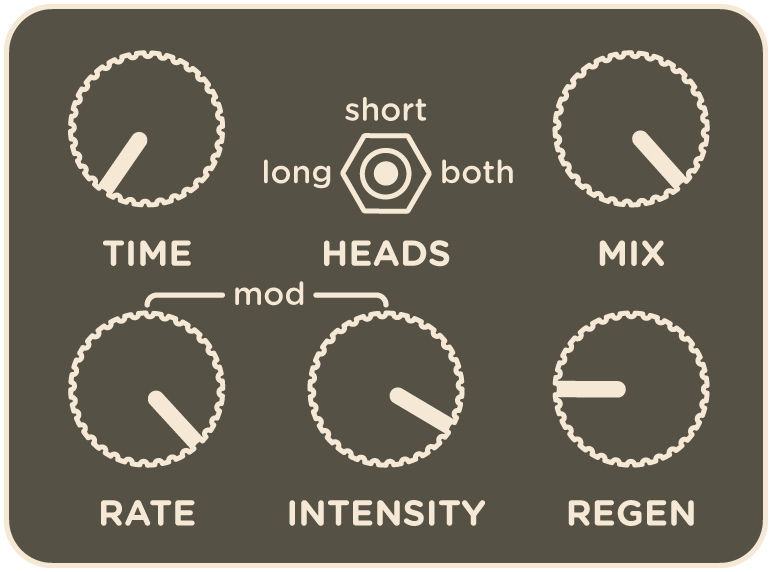
Max Rate and Depth values and a minimum Short Time value create lush modulation. Dry and Wet mixed in Pro Tools.
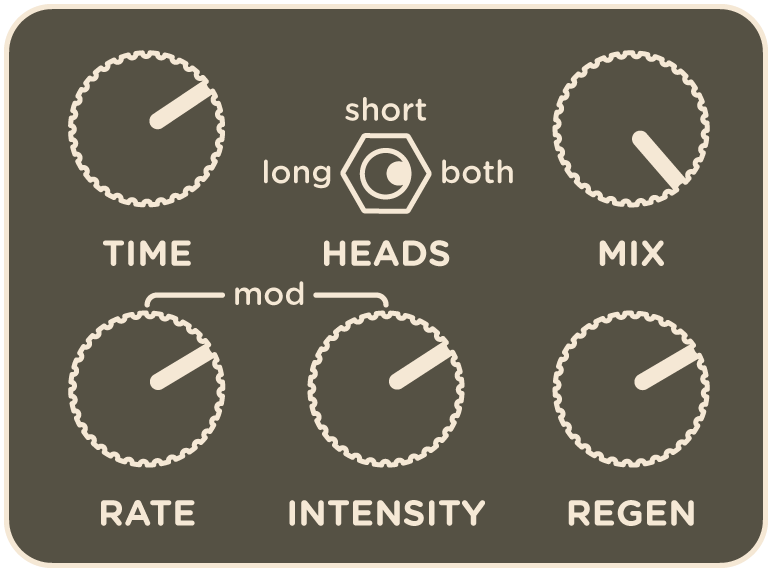
Adding wetness to an already wet sound, tweaks to the Time knob create a feeling of rising and falling. Dry and Wet mixed in Pro Tools.
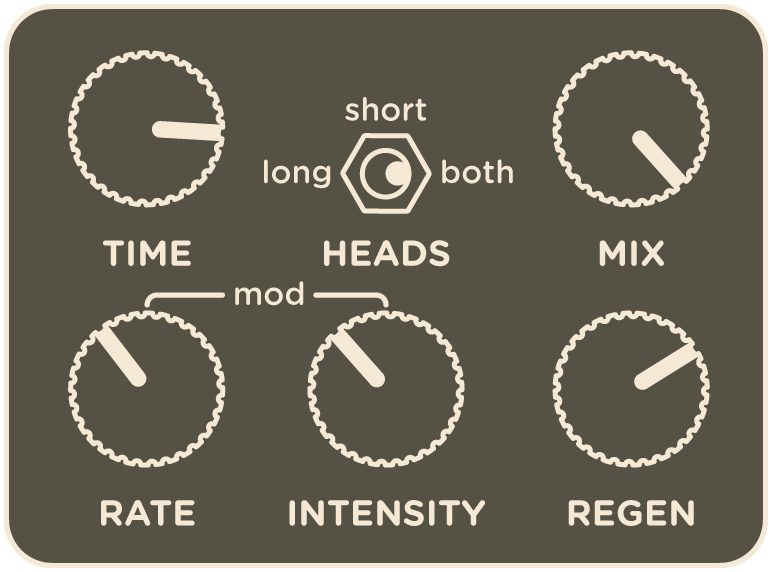
Both heads and lower modulation create the feeling of a lullaby. Dry and Wet mixed in Pro Tools.
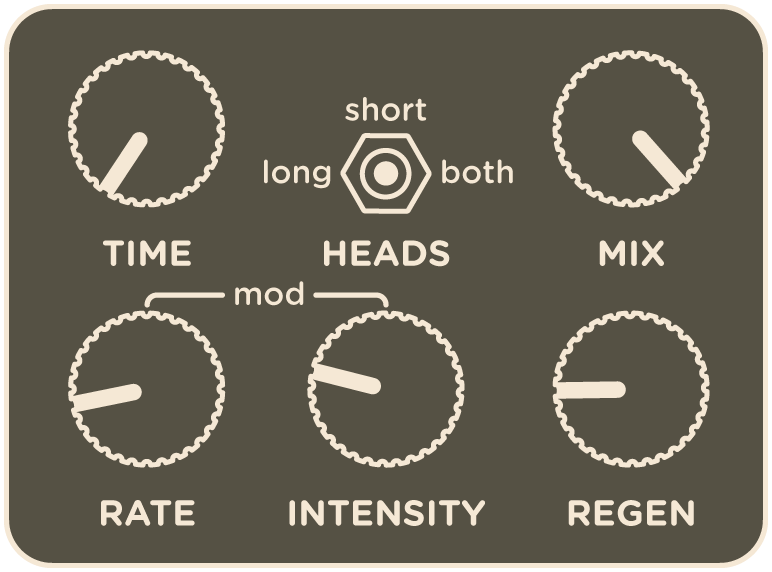
Here, a warm slapback is created with little modulation, just to add width to the sound. Dry and Wet mixed in Pro Tools.
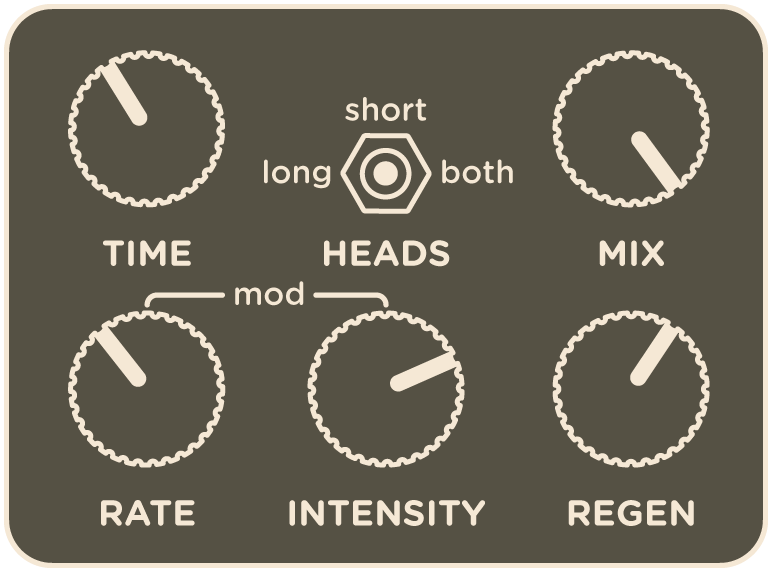
The Short head is used to create warm slapback for a lead synth. Dry and Wet mixed in Pro Tools.
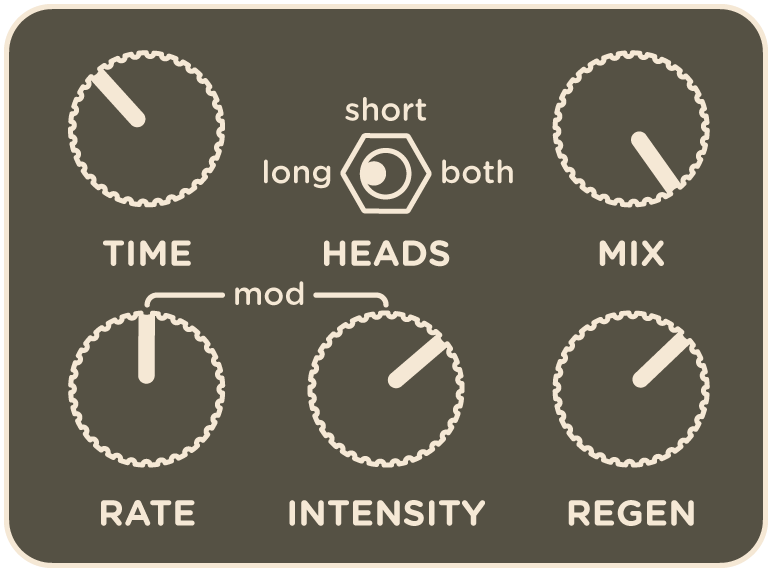
Medium Rate, Regeneration and Time values create a warm ambient wash. Dry and Wet mixed in Pro Tools.
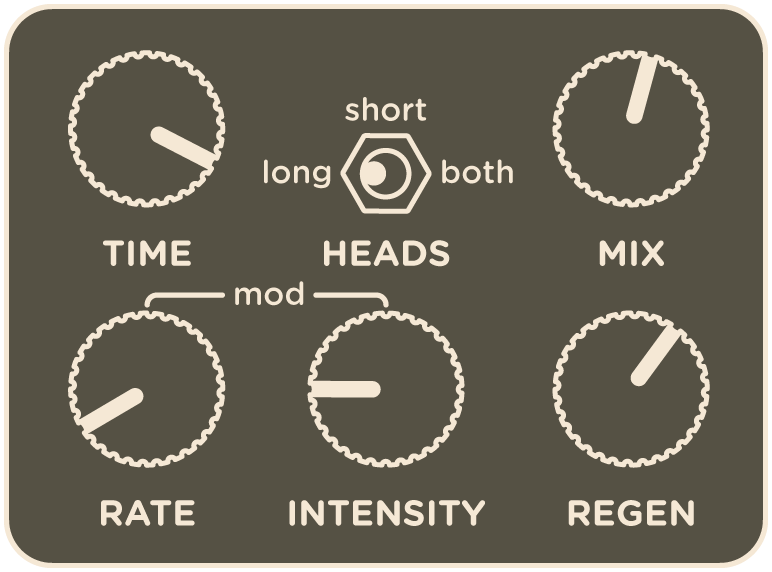
Lush, layered and modulated echoes are created from a higher delay time on the Long Heads setting. At the end an expression pedal increases both Mix and Regen.
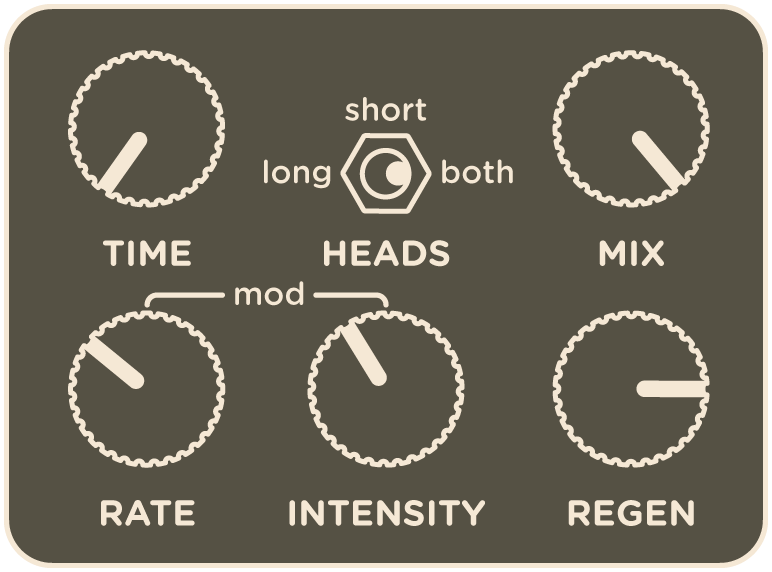
Fast Time, high Regen and 100% wet Mix create a thick, dark and warbly chorus-like lo-fi tone that slowly modulates and reverberates into itself.
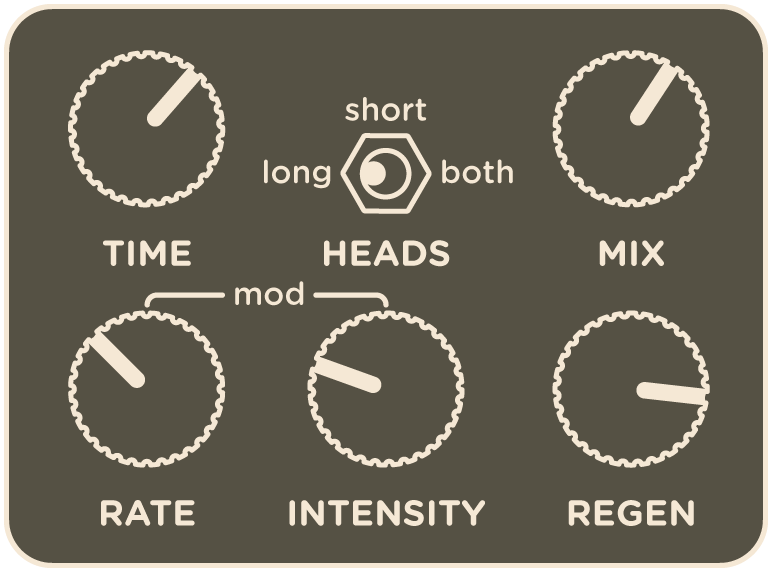
Bright and bouncy repeats that decay beautifully, don’t overpower the dry guitar sound and scatter across the stereo field.
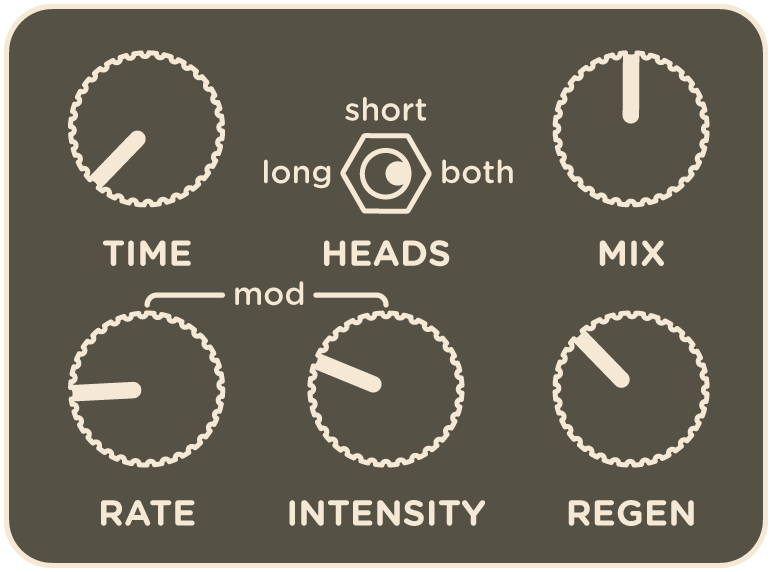
A Minimum Time setting in Both Heads mode creates almost Spring-like tones and reverberant echoes. At the end an Expression pedal increases both Mix and Regen.
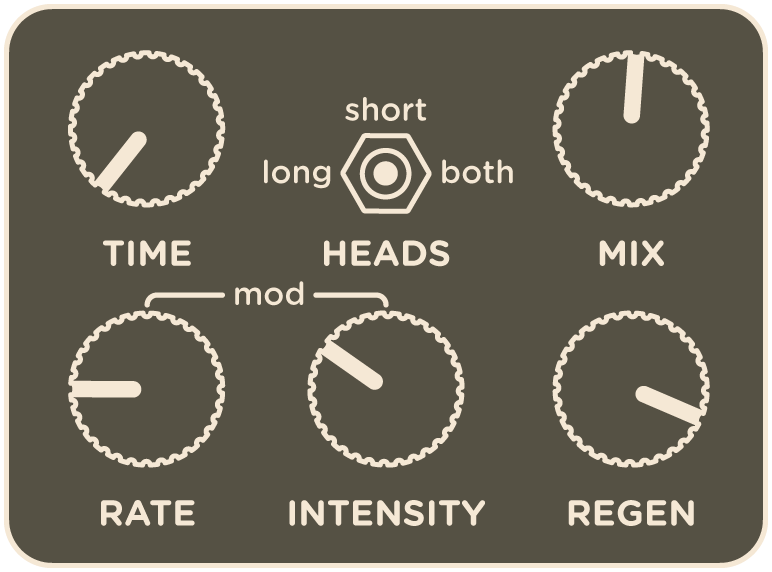
A nearly-maxed out Regen paired with minimum Time and a 50% Mix creates a tone reminiscent of slap back echo mixed with a bright, present modulated Spring reverb.
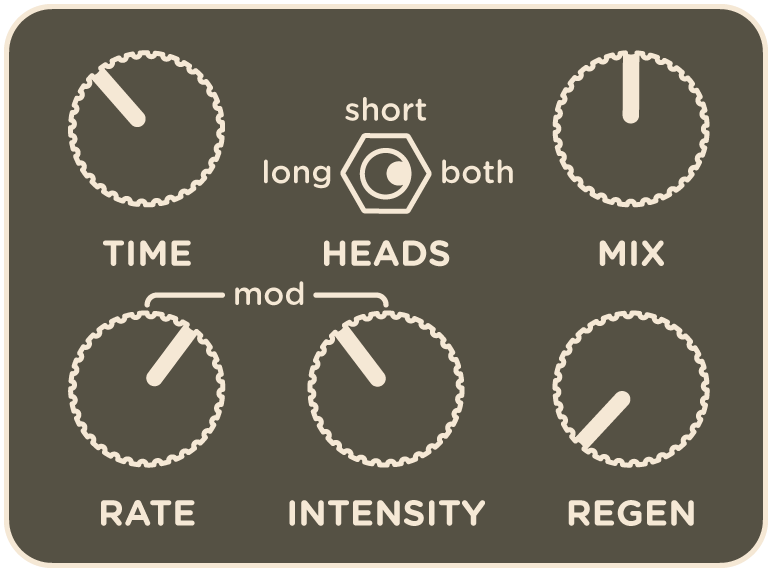
Warm and heavily modulated echoes quickly swirl below a bright guitar tone to create a robust and multi-layered bright guitar tone.
The Time knob determines the delay time for the repeats by adjusting the rotational speed of the oil can. Some vintage units had a fixed speed, but we’ve allowed the rotational speed to vary between roughly 200ms to 800ms in total delay time, which can be further modified by the Head selection switch.
Short Head delay time: 72ms – 290ms
Long Head delay time: 155ms – 620ms
Disc Rotation, 200ms – 800ms (residual static repeats)
Vintage oil can echo units had a single record head and two playback heads. The playback head’s distance from the record head determined the decay time of the echo, and you can choose from ‘Short’, ‘Long’ or ‘Both’ with this switch. The ‘Short’ setting selects the head that is the closest to the Record head for the shortest echo, and the ‘Long’ setting selects the head that is the farthest away from the Record Head for the longest echo. The ‘Both’ setting enables both heads at the same time, giving the repeats a lopsided and complex scenario.
This control determines the mix of the wet and dry signal, with a 50/50 mix of wet and dry occurring at roughly 3 o’clock on the knob.
Controls the speed of the modulation.
Controls the intensity of the modulation, where the modulation becomes much more prominent in the audio mix the higher the position of the knob.
This control was often labeled “reverb” on vintage units, and it controls the amount of echo repeats that are fed back into the can to be reprocessed.
Higher settings of the knob create a reverberant and atmospheric character, which many would say is one of the signature elements to the sonic character of an oil can echo.
NOTE: Hold the footswitch while turning the Regeneration knob to adjust the tone of the repeats. Noon on the knob is the character that we captured from our reference units, with lower settings being darker, and higher settings brightening the repeats.
Use a Strymon MiniSwitch to engage continuous repeats — just like turning the Regeneration knob to maximum — for endless, evolving echoes.
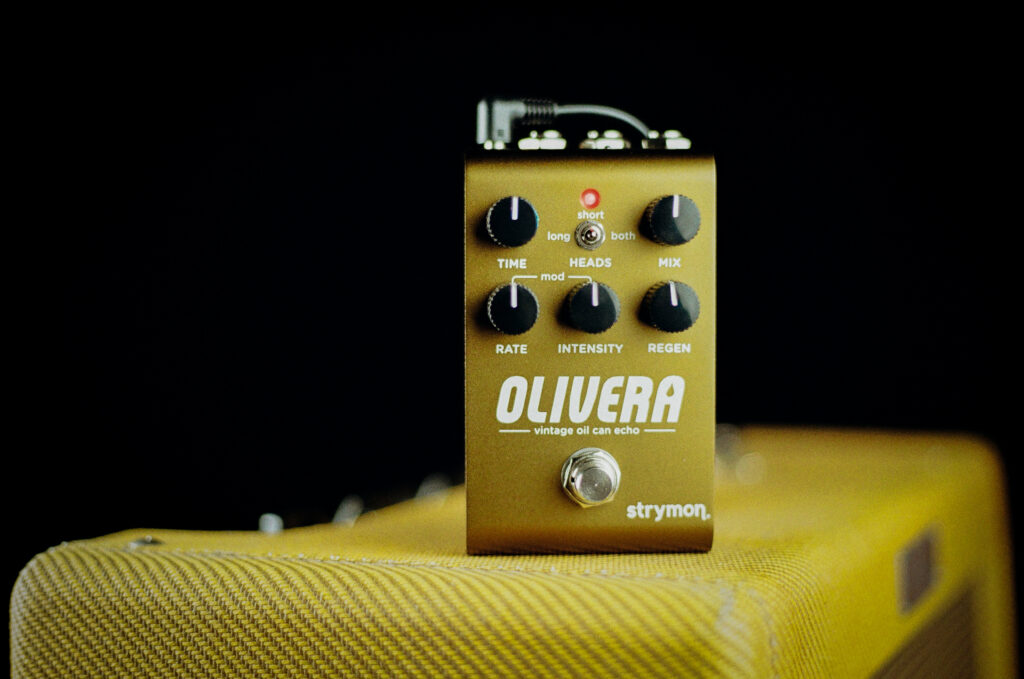
Limitless Possibilites.
Olivera features full MIDI implementation and 300 presets, allowing you to control it remotely via a MIDI controller or Digital Audio Workstation via either the EXP/MIDI jack or USB connection.
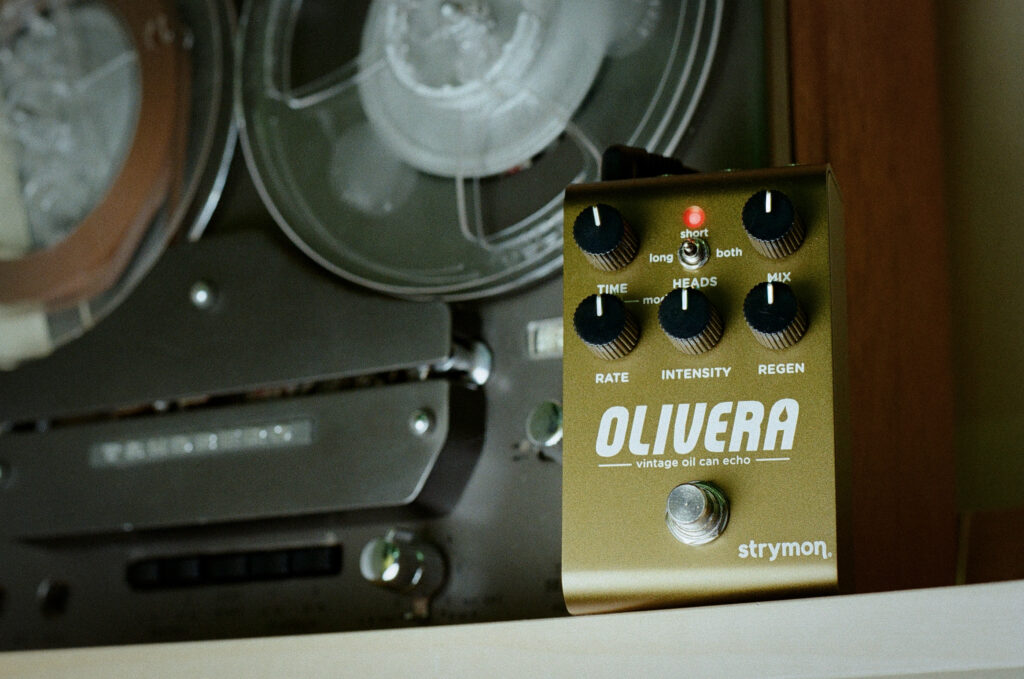
Choose Your Bypass Mode.
Olivera allows you to choose between electromechanical relay-switched true bypass for fully untouched and unprocessed signal when the pedal is not turned on (the default behavior), or our premium buffered bypass, which preserves your signal’s integrity by preventing the loss of high frequencies that can happen due to long cable runs.
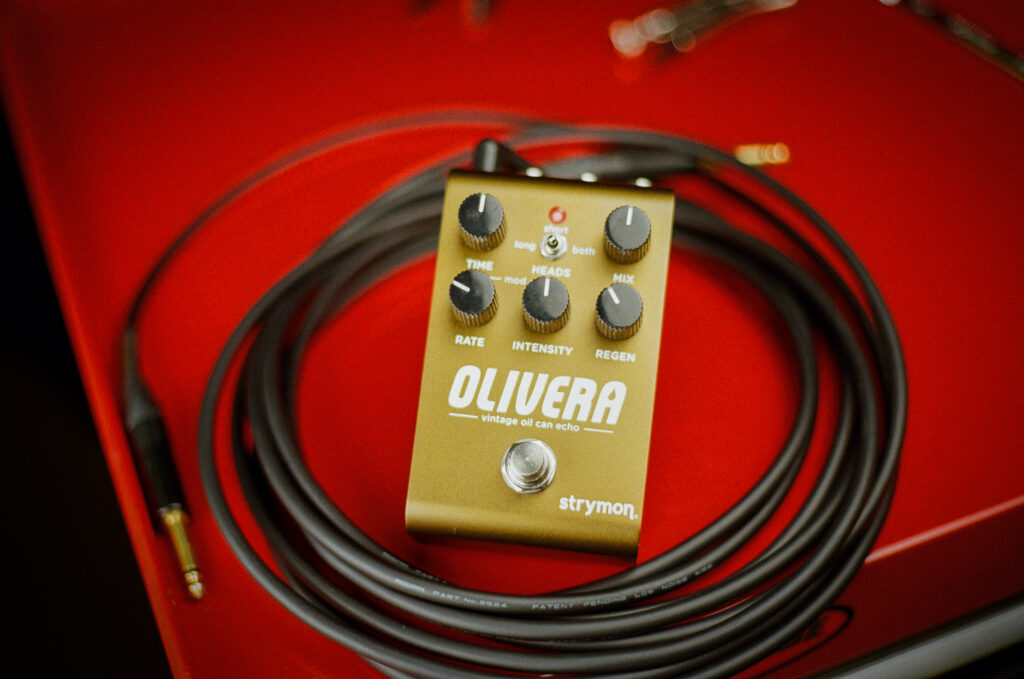
Analog Touch.
Our discreet Class A JEFT input preamp is one of our secret weapons, providing the ultimate in dynamics and feel. The preamp circuit prepares the incoming audio to be processed in the most ideal way possible, optimizing for ultra-low noise operation and a flat frequency response.
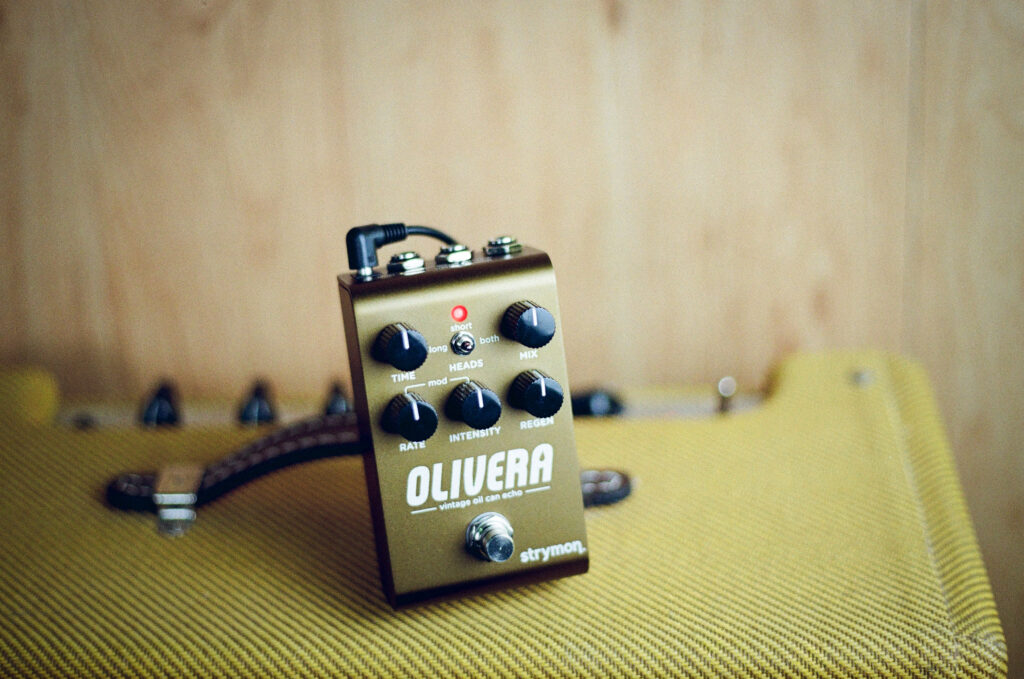
Moving In Stereo.
Olivera features full stereo input and output capabilities, processing incoming stereo signals independently so that you can confidently place it anywhere you like in your signal chain.
There are three different input/output routing options, which are accessible from the dedicated switch on the rear panel: Mono In/Mono Out, Mono In/Stereo Out, and Stereo In/Stereo Out. The dedicated TRS stereo Inputs and Outputs make patching easy too (stereo in and out requires a TRS cable of some type for each jack).
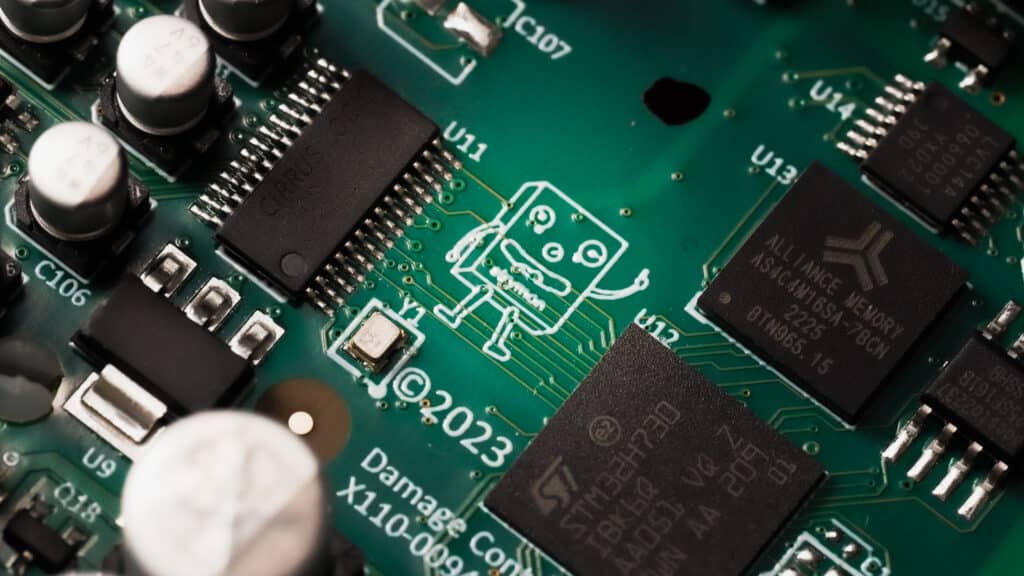
Power To The Pedal.
We are now using ARM processors in many of our products, which are an evolution in technology led by mobile devices and laptop computers. These devices offer the ability to perform more simultaneous processes than ever before, while consuming significantly less current. This provides more horsepower for emulating every sonic nuance, with less current draw from your pedalboard’s power supply.
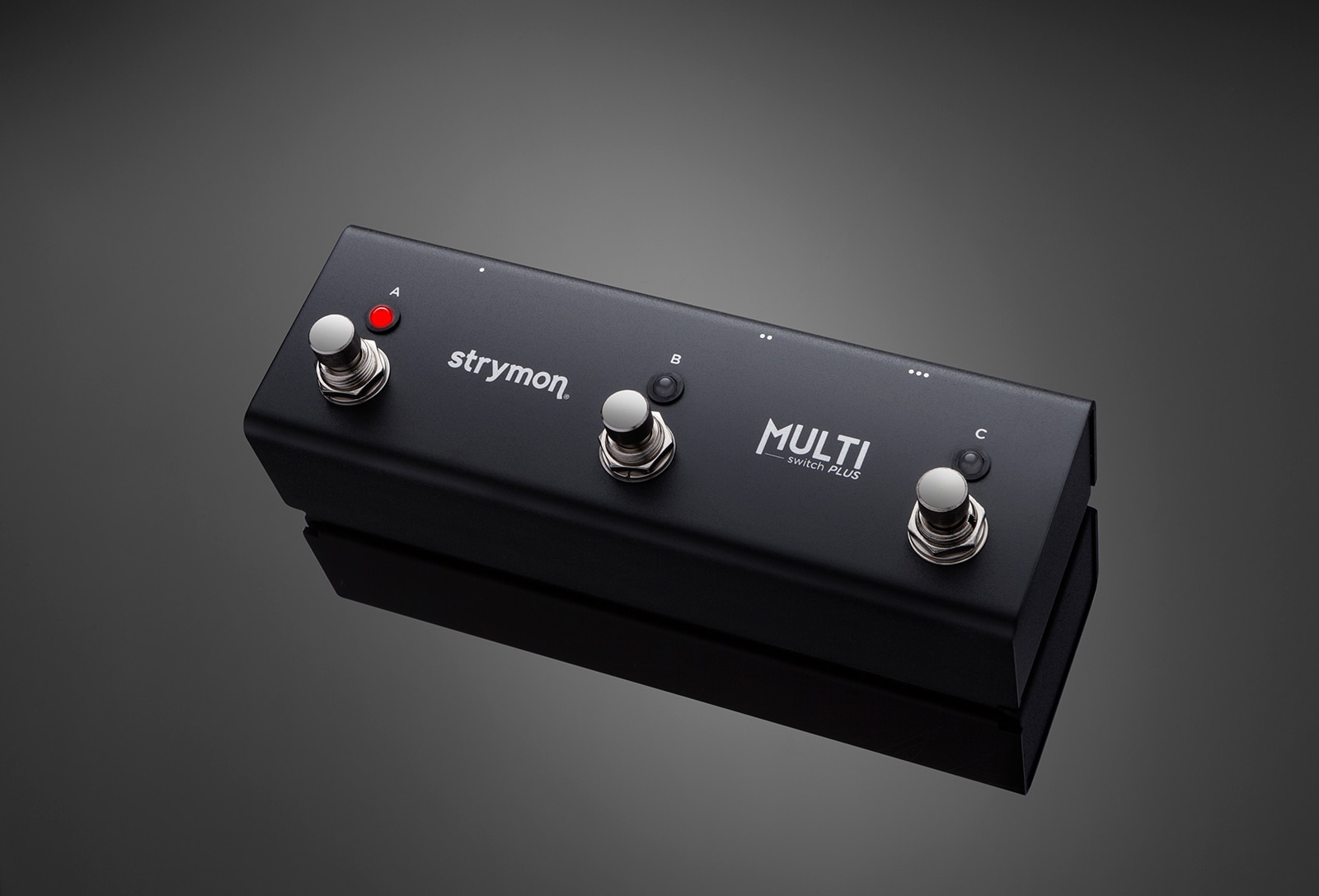
Switch Things Up A Bit.
Connecting a Strymon MultiSwitch Plus to Olivera unlocks expanded control and flexibility. Use Preset Mode to instantly access three favorite sounds, or switch to Custom Mode to toggle Modulation, recall your Favorite preset, and engage Infinite Repeats — all from a single compact pedal.
Use the interactive dots (+) to learn more about Olivera’s knobs, switches, and inputs/outputs.
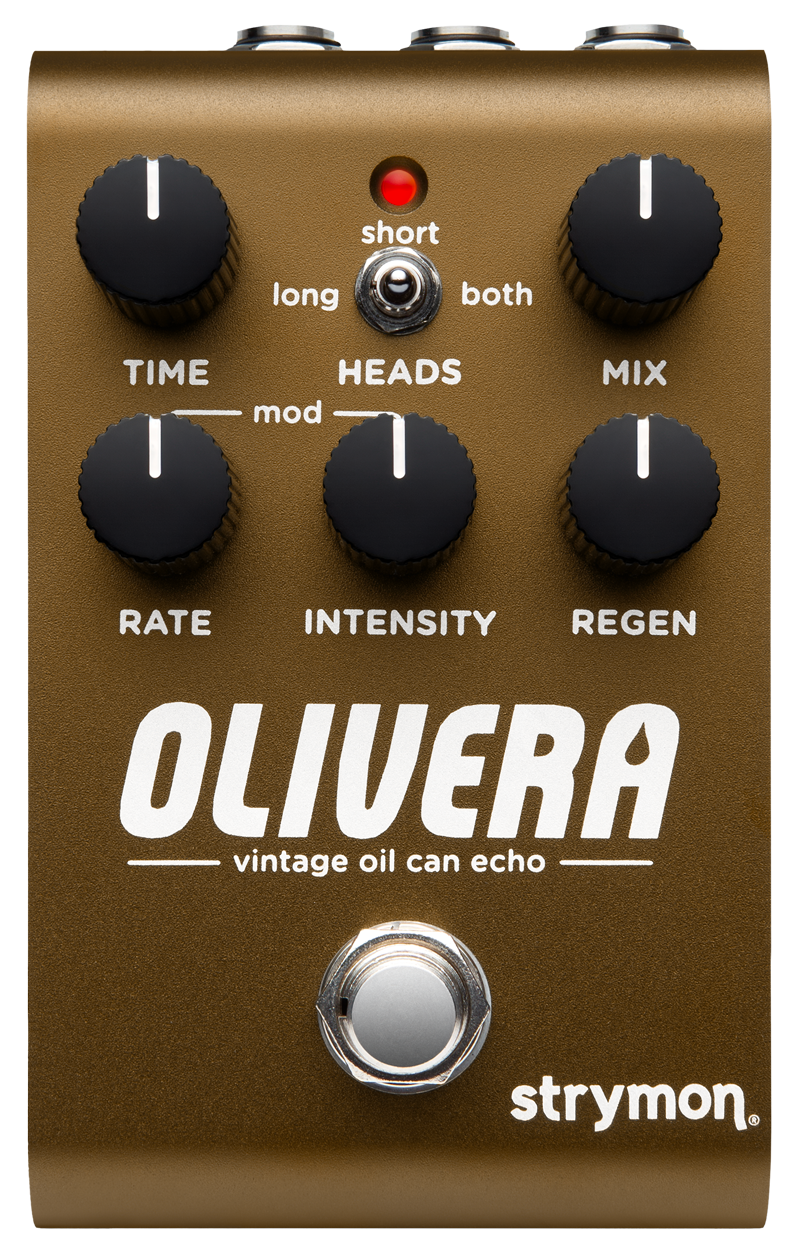
TIME
For a vintage oil can echo, the delay time is adjusted by changing the rotation speed of the can. TIME adjusts the virtual rotation speed.
Delay time is also determined by the HEADS selection.
MIX
Controls the balance of dry and wet signals from 100% dry at minimum to 100% wet at maximum. A 50/50 mix is achieved at the 3 o’clock position when the DRY SIGNAL (Power Up Mode) is set to its default Digital option.
RATE
Controls the speed of the modulation applied to the echo repeats.
REGEN
Controls the amount of delay signal fed back from the selected head(s) to the input. At minimum, some echoes are still present from residual static charge on the can. At maximum, oscillation and endless repeats will occur.
INTENSITY
Adjusts the depth of the modulation. At minimum, modulation is off.
FOOTSWITCH
Engages and disengages the effect. The RED LED on at the top of the pedal indicates that the effect is engaged.
True Bypass is enabled by default, or Olivera can optionally set to Buffered Bypass.
See full User Manual for additional functions
HEADS
The 3-way toggle switch selects the active play heads for different delay times and patterns:
long: (left) Positioned further from the record head, providing a longer delay time.
short: (middle) Positioned closer to the record head, providing a shorter delay time.
both: (right) Enables both heads for a multi-tap echo pattern.
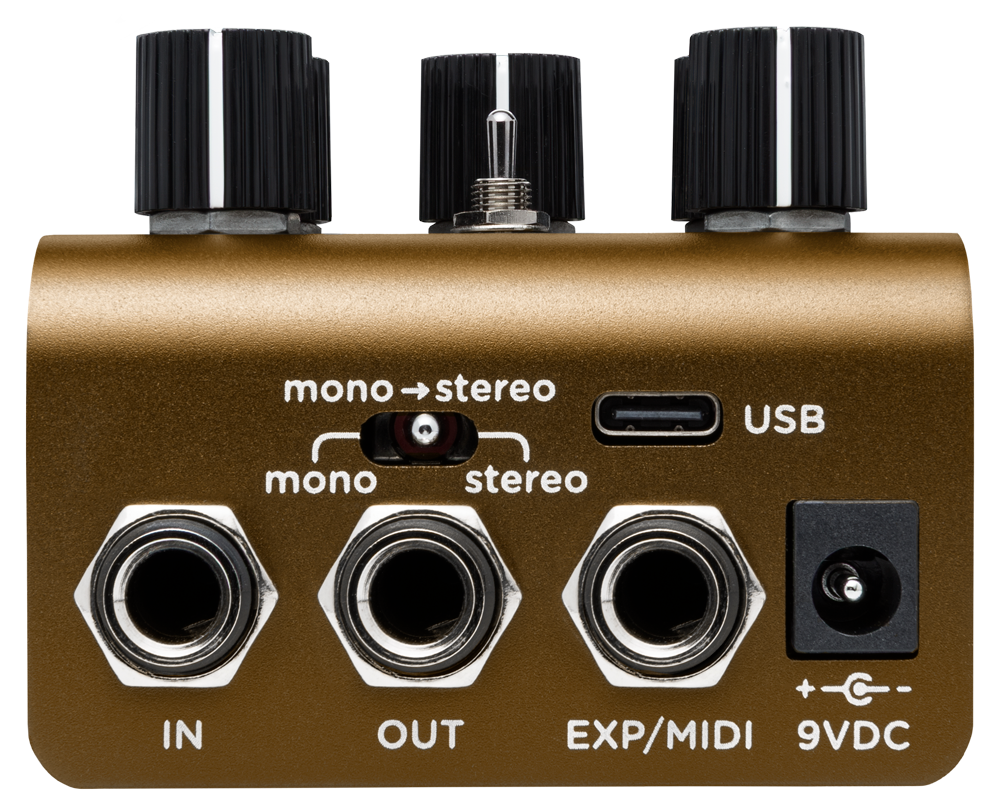
IN
(TRS jack) High impedance, ultra low-noise, discrete Class A JFET stereo preamp.
OUT
(TRS jack) Low impedance stereo output.
EXP/MIDI
Multifunction communication jack for external control of Olivera's features and functions, including MIDI, expression pedal, and more. See manual for full details.
9V DC
Only use an adapter with the following rating:
- 2.1mm, center-negative
- 9V DC
- 250mA minimum (Adapter sold separately.)
USB
Computer connection for MIDI I/O and firmware updates.
I/O MODE SELECTOR
mono: use with a mono input signal, such as a guitar. Output is mono. Defaults to True Bypass.
mono -> stereo: use with a mono input signal. Output is stereo. Bypass mode is Buffered Bypass.
stereo: use with a stereo input signal. When used with stereo cable connections to the OUT jack, output is true stereo. Bypass mode is Buffered Bypass.
Stereo I/O requires a TRS adapter or cable.